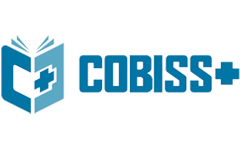Linguistic and Cultural Challenges Faced by Translators
DOI:
https://doi.org/10.61841/3mnmcp21Keywords:
translation and interpretation, cultural equivalenceAbstract
This article attempts to highlight some of the problems faced by translators when the target language belongs to an entirely different culture from the source language. Every society has its own religious, cultural, economic, political, military and scientific parameters. Translations and translators have a significant role in intercultural translation. It is often said that language is the road map to the culture of a particular state, country or region. During intercultural translation, many different processes of cross language interaction take place.
The study of intercultural translation brings forth how we come to know other ways of doing various activities, customs, traditions, methods of celebrating festivals and conversations among people in societies and cultures which are alien to the translator. This paper tries to offer possible solutions to challenges faced by translators during intercultural translation so that they can not only produce an acceptable but a competent translation.
Downloads
References
1. Barnwell, K. 1986. Bible Translation: Introductory Course in Translation Principles.
2. Dallas TX: Summer Institute of Linguistics.
3. Muhammad, A.K. 2014. An Analysis of English – Indonesian Translation Quality onTwitter Web Pages (A Case Study). Journal of English and Education 2(1): 27-38.
4. Oppert, G. 1998. On The Original Inhabitants of Bharatavarsa or India.
5. New Delhi:Asian Educational Services.
6. Zou, S. 2016. Research on Cultural Equivalence in Translation. Paper presented at the 6th International Conference on Management, Education, Information and Control, Shenyang, China, 24-26th September.
7. Obediat, Eshraq and Abu Melhim, Abdel Rehman. 2017. Foreignization and Domestication in Translating English-Arabic Baby Formula labels. British Journal of Humanities and Social Sciences 17: 50-65.
8. Venuti, L. 2008. The Translator′s Invisibility: A History of Translation. New York: Routledge.
Downloads
Published
Issue
Section
License
Copyright (c) 2020 AUTHOR

This work is licensed under a Creative Commons Attribution 4.0 International License.
You are free to:
- Share — copy and redistribute the material in any medium or format for any purpose, even commercially.
- Adapt — remix, transform, and build upon the material for any purpose, even commercially.
- The licensor cannot revoke these freedoms as long as you follow the license terms.
Under the following terms:
- Attribution — You must give appropriate credit , provide a link to the license, and indicate if changes were made . You may do so in any reasonable manner, but not in any way that suggests the licensor endorses you or your use.
- No additional restrictions — You may not apply legal terms or technological measures that legally restrict others from doing anything the license permits.
Notices:
You do not have to comply with the license for elements of the material in the public domain or where your use is permitted by an applicable exception or limitation .
No warranties are given. The license may not give you all of the permissions necessary for your intended use. For example, other rights such as publicity, privacy, or moral rights may limit how you use the material.
















